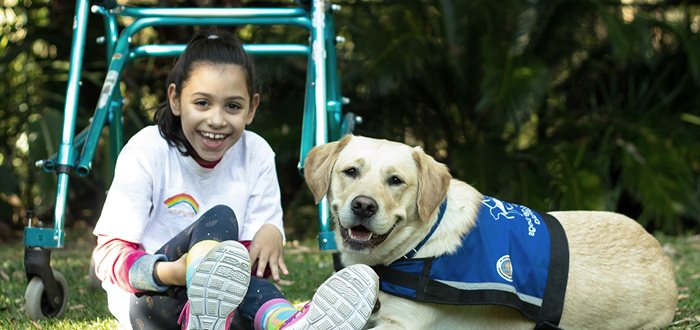More than companions, assistance dogs are lifelines—empowering independence, restoring confidence, and bringing hope to people living with disability.
For Sarah-Jane* (SJ), life once revolved around outdoor fitness, travel, and a stable long-term relationship. As a professional fitness instructor, she thrived in nature and movement. But in a matter of moments, everything changed.
“It was a slip of a hand during surgery. Within seconds, I had quadriplegia,” SJ recalls.
A routine operation left her paralysed, with limited movement in her arms and legs—and no hand function. After a long and difficult rehabilitation, SJ’s world shifted again when she was matched with Cozie, a black Labrador trained as an assistance dog.
Cozie quickly became more than a helper—he became SJ’s ticket to independence.
“He opens doors, collects laundry, and even helps take off my raincoat,” SJ says. “But most importantly, he’s given me the confidence to get back out into the parks and ski slopes I used to love. The less I need to ask others for help, the more my life feels normal.”
What Is an Assistance Dog?
In Australia, an assistance dog is specifically trained to support people with a disability by performing physical tasks that help them live more independently. Unlike emotional support animals or therapy dogs, certified assistance dogs have public access rights under Australian law and must pass a formal Public Access Test (PAT).
These dogs are trained for a range of conditions, including:
- Physical disability
- Autism support
- PTSD (Post-Traumatic Stress Disorder)
- Hearing loss or visual impairment
- Seizure or diabetic alerts
Each dog can be trained to respond to over 50 unique commands—pressing buttons, retrieving items, alerting others in emergencies, and more.
The Role of Assistance Dogs Australia
Assistance Dogs Australia (ADA) is a not-for-profit organisation providing professionally trained assistance dogs to Australians with disabilities. Over the past 25 years, ADA has placed more than 550 dogs into homes across the country.
CEO Richard Lord notes that the benefits of these dogs extend beyond daily tasks.
“Assistance dogs reduce stress, improve social inclusion, and increase physical activity. They also help people rely less on medication and paid support.”
Training an assistance dog is a serious commitment—taking up to two years and costing around $40,000 per dog. This covers training, food, healthcare, and the placement of the dog with a matched owner.
Assistance Dogs vs Therapy and Emotional Support Dogs
It's important to understand the distinctions:
| Type of Dog | Trained for Tasks? | Legal Public Access? | Typical Uses |
|---|---|---|---|
| Assistance Dog | ✅ Yes | ✅ Yes | Physical disability, PTSD, autism |
| Therapy/Emotional Dog | ❌ No | ❌ No | Comfort and emotional support |
| Companion Animal | ❌ No | ❌ No | Pet companionship |
A Rewarding Life for the Dogs Too
At ADA, training is not just rigorous—it’s enjoyable. Puppies undergo early socialisation, basic obedience training, and are taught to remain calm in diverse environments.
“We use positive reinforcement to encourage the right behaviours,” Lord explains. “Training is a fun and engaging experience for the dogs, not just the people.”
Once trained, assistance dogs typically work until around 10–11 years old, enjoying a fulfilling career helping others.
Limited Availability, Lifelong Impact
With hundreds of enquiries received annually, demand for assistance dogs in Australia far exceeds supply. At times, organisations like ADA must pause new applications while they manage waiting lists.
If you're considering applying, ensure the organisation is accredited by Assistance Dogs International or recognised by your state government.
Supporting Independence at Just Better Care
At Just Better Care, we understand the power of personal support—whether it’s a compassionate carer or a highly trained assistance dog. If you or someone you care about could benefit from disability support services or guidance on accessing assistance dog programs, contact our team today.
*Surname withheld to protect privacy.


.png?width=2400&height=1246&ext=.png)

